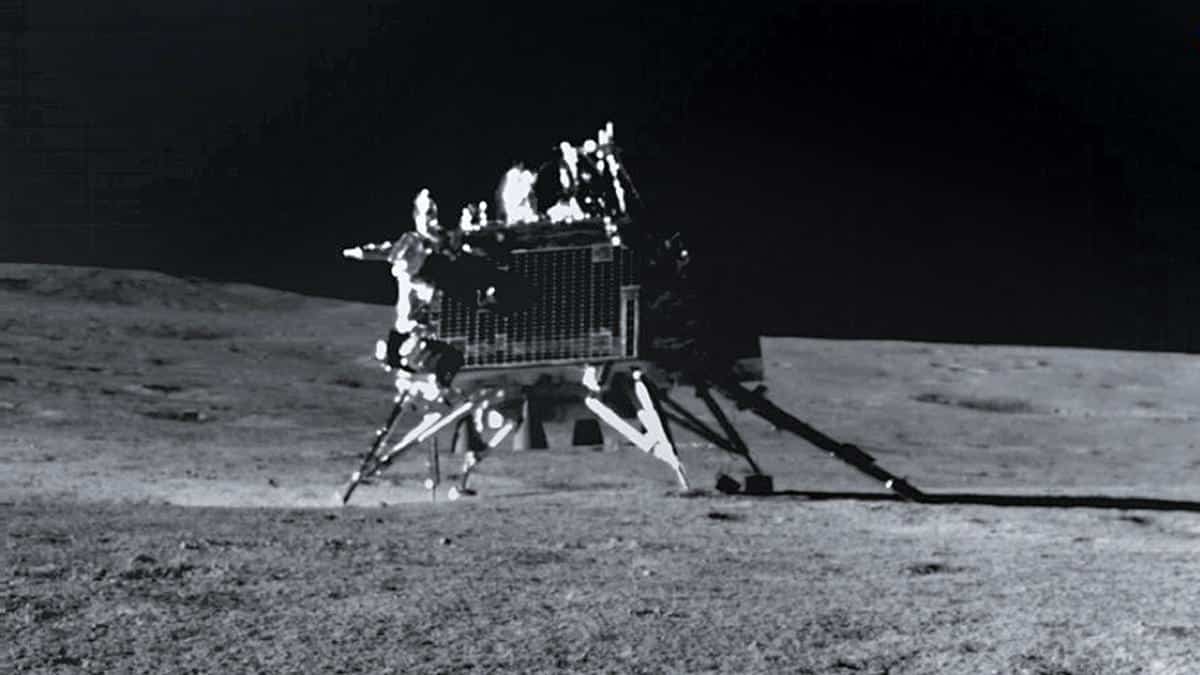What’s in Today’s Article?
- Why in News?
- What is Hop Test?
- Why is the Hop Test Important?
- Updates after the Hop Experiment
- Chandrayaan 3 Mission’s Achievements So Far
Why in News?
- Exceeding its mission objectives, the Chandrayaan-3 mission’s lander Vikram has achieved another significant milestone as it successfully undertook a hop experiment.
What is Hop Test?
- The Indian Space Research Organisation (ISRO) said that the lander (on command) successfully fired the engines, elevated itself by about 40 cm as expected and landed safely at a distance of 30-40 cm away.
- It demonstrated ISRO’s capability to get the lander to fire its engines and produce the thrust to lift it off the ground.
Why is the Hop Test Important?
- Though ISRO is yet to announce follow-up missions to the Moon, scientists are of the view that a sample return mission was the next logical step to Chandrayaan-3.
- In fact, if Chandrayaan-2 had been successful in 2019, Chandrayaan-3 would have been a sample return mission.
- The human lander mission would also come at a later point.
- The Chinese Chang’e lunar programme has also progressed on similar lines. China sent an orbiter (2007), its first lunar mission, and then followed it up with a lander and sample return mission (last one in 2020).
- As a result, the hop test is critical for future lunar missions, as in the case of return missions or human lander missions, the lander must lift off from the lunar surface and return to Earth.
- Of course, the thrust required in those situations would be much higher.
- But as a technology demonstration, the ‘hop experiment’ would remain one of the highlights of the Chandrayaan-3 mission.
- The successful hop experiment also signifies India’s capabilities in space exploration, potentially attracting international investments into the country.
Updates after the Hop Experiment:
- ISRO said the spacecraft and the instruments onboard were all working fine after the ‘hop’.
- Deployed ramp, ChaSTE and ILSA (instruments) were folded back and redeployed successfully after the experiment.
- Shortly thereafter, the payloads onboard the lander were put to sleep in preparation for the incoming night time.
- The solar-powered instruments were not designed to survive the extreme low temperatures of lunar night, which drops well below -120 degree Celsius.
- Hence, the instruments onboard the rover were put in sleep mode, a few days earlier than the beginning of the night-time.
- The remaining battery would try to keep the instruments warm during the night-time, which too extends for 14 Earth days.
- If the battery does not completely drain during this time, the instruments can become active once again when sunshine becomes available.
- Soon after the launch of the Aditya-L1 mission, the ISRO Chairman also announced plans to extend the mission life of both the lander and rover.
- The mission life of both the lander and rover was supposed to be only one lunar day, equivalent to 14 days on Earth.
Chandrayaan 3 Mission’s Achievements So Far:
- Rover Exploration:
- Prior to activating the Pragyan rover’s sleep mode, ISRO reported that it covered a distance of over 100 meters.
- Notably, the rover’s communication range is limited to 500 meters from the Vikram lander.
- Historic Sulphur Discovery:
- The Laser-Induced Breakdown Spectroscope (LIBS) instrument onboard the rover confirmed the presence of Sulphur (S) in the lunar surface near the south pole.
- Additionally, LIBS detected Al, Ca, Fe, Cr, Ti, Mn, Si, and O.
- Pioneering Plasma Measurements:
- The RAMBHA-LP payload onboard Chandrayaan-3 Lander conducted groundbreaking measurements of the near-surface lunar plasma environment over the south polar region.
- These quantitative measurements hold promise for mitigating interference in radio wave communication and enhancing future lunar mission designs.
- Seismic Activity Recording:
- The ILSA payload on Chandrayaan 3 Lander – the first Micro Electro Mechanical Systems (MEMS) technology-based instrument on the moon, recorded the movements of the rover and other payloads.
- Additionally, it captured an event deemed to be of natural origin, which is currently under investigation.
- Thermal Behaviour Exploration:
- The ChaSTE instrument measured the temperature profile of the lunar topsoil around the pole to better understand the thermal characteristics of the moon’s surface.
- This marked the first such profile for the lunar south pole, with ongoing detailed observations.
- Alternate Sulphur Confirmation:
- Another instrument onboard the rover corroborated the presence of Sulphur (S) in the region using a distinct technique.
- The APXS detected S alongside other minor elements.
Q1) What is the Aditya-L1 mission?
Aditya-L1 is a satellite dedicated to the comprehensive study of the Sun. It has 7 distinct payloads, 5 being developed by ISRO and 2 by Indian academic institutes in collaboration with ISRO.
Q2) What is the name of China’s lunar programme?
The Chinese Lunar Exploration Program, also known as the Chang’e Project after the Chinese Moon goddess Chang’e, is an ongoing series of robotic Moon missions by the China National Space Administration.
Source: Chandrayaan-3 lander Vikram comes up with a surprise, makes a ‘jump’ on the Moon | TH | HT
Last updated on June, 2025
→ UPSC Notification 2025 was released on 22nd January 2025.
→ UPSC Prelims Result 2025 is out now for the CSE held on 25 May 2025.
→ UPSC Prelims Question Paper 2025 and Unofficial Prelims Answer Key 2025 are available now.
→ UPSC Calendar 2026 is released on 15th May, 2025.
→ The UPSC Vacancy 2025 were released 1129, out of which 979 were for UPSC CSE and remaining 150 are for UPSC IFoS.
→ UPSC Mains 2025 will be conducted on 22nd August 2025.
→ UPSC Prelims 2026 will be conducted on 24th May, 2026 & UPSC Mains 2026 will be conducted on 21st August 2026.
→ The UPSC Selection Process is of 3 stages-Prelims, Mains and Interview.
→ UPSC Result 2024 is released with latest UPSC Marksheet 2024. Check Now!
→ UPSC Toppers List 2024 is released now. Shakti Dubey is UPSC AIR 1 2024 Topper.
→ Also check Best IAS Coaching in Delhi
























